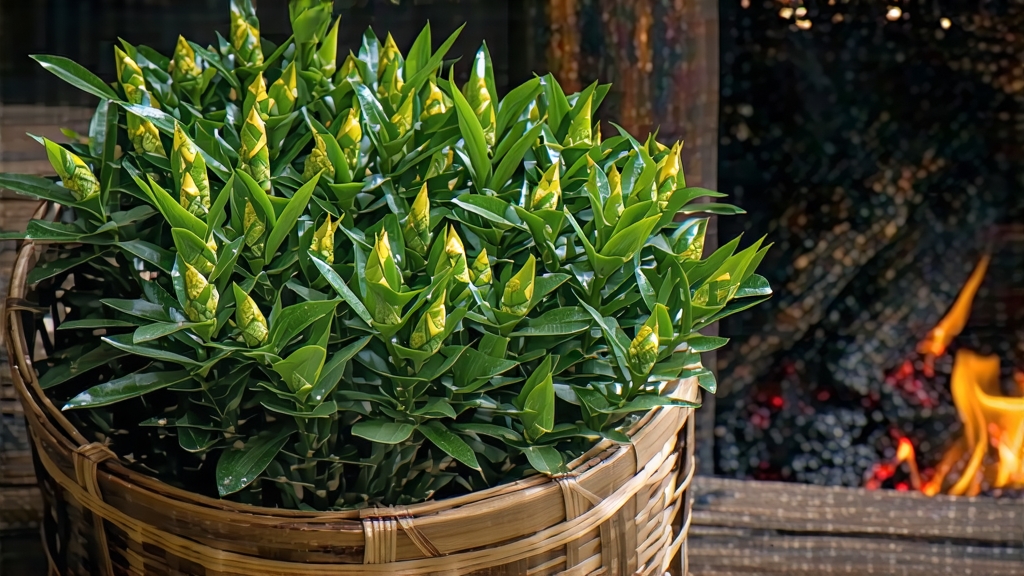
Tucked high in the mist-veiled Dabie Mountains of western Anhui Province, a tea once reserved for emperors still follows a rhythm that has changed little since the Ming dynasty. Huoshan Huangya—literally “Yellow Bud of Huoshan”—is the least-known member of China’s six great tea families, yet it carries the most enigmatic processing secret: the art of “menhuang,” a slow, humid coaxing that turns green into gold. For the international drinker accustomed to the bright snap of green tea or the malty heft of black, Huangya offers a quiet revelation: a liquor the color of morning sunlight, a fragrance that drifts between fresh alfalfa and steamed corn, and a finish that lingers like warm hay left out in July.
Historical whispers first place Huoshan Huangya in the imperial tribute lists of 1583, when the Wanli Emperor received 300 taels of “small-bud yellow” from the prefecture of Lù’an. Carried by mule along the old Huizhou merchant roads, the tea reached Beijing in bamboo-leaf cylinders sealed with tung-oil paper; court annals praise its ability to “lift the mind without agitating the dragon pulse,” a reference to the emperor’s own heartbeat. By the late Qing the tea had all but vanished, its intricate production eclipsed by simpler green teas demanded by export markets. Rediscovery came in 1972, when a team of Anhui agronomists found three ancient shrubs in the village of Jinjiaping and spent three years decoding the vanished craft from the memories of two octogenarian monks. Today the protected-origin zone covers only 1800 hectares split across Huoshan, Jinzhai and Yuexi counties; total annual yield is less than 25 tons, a thimbleful beside the ocean of Dragon Well or Bi Luo Chun.
The cultivar itself is a local seed-selected variety called “Huoshan early-leaf,” whose small, oval buds naturally tilt upward like tiny spires. Spring picking begins when mountain temperatures still brush freezing; only the standard “one bud with one initial leaf” is taken, never longer than 2.5 cm. A seasoned plucker gathers barely 400 g in a dawn shift, enough for perhaps 80 g of finished tea after the long road of withering, firing, and menhuang.
Menhuang—often translated as “sealed yellowing”—is the pivotal step that separates yellow from green. After a brief kill-green at 160 °C on a bamboo-fired wok, the leaf is piled in hip-high heaps on square linen mats, covered with wet cotton cloth, and left in a pine-panelled room kept at 28 °C and 75 % humidity. Over the next 4–6 hours the leaf ferments in micro-aerobic conditions, chlorophyll slowly oxidizing into pheophytin while flavonols convert to their sweeter glycosides. Every 45 minutes the tea master lifts the cloth, fans the pile, and tests the fragrance; when the aroma shifts from grassy to chestnut-sweet and the leaf feels like warm suede, the moment has arrived. A second low-temperature firing locks in the color, followed by a final gentle charcoal bake over Huoshan’s famous hard maple. The entire cycle spans three days and consumes four kilos of firewood for every kilo of tea, a ratio that explains both the price and the perfume.
Finished Huangya appears slim and straight, the color a muted avocado flecked with golden down. A 5 g portion for gongfu brewing unfurls in a gaiwan like miniature bamboo shoots, releasing a first infusion of brilliant canary with a rim of jade. The nose opens on steamed edamame and fresh straw, then drifts into notes of acacia honey and faint pipe tobacco. On the palate a silky umami coats the tongue, quickly washed by a cool, mint-tinged minerality drawn from the granite soils of the Dabie range. The third steep edges toward creamed corn and white sesame, while the fifth returns to a clean, rain-water sweetness that invites another hour of quiet sipping. Because the leaf is so tender, water should never exceed 85 °C; a silver or glass vessel is preferred to map the slow color shift, and the first three infusions should be no longer than 25, 35, and 45 seconds respectively. Western-style brewing in a 400 ml pot works with